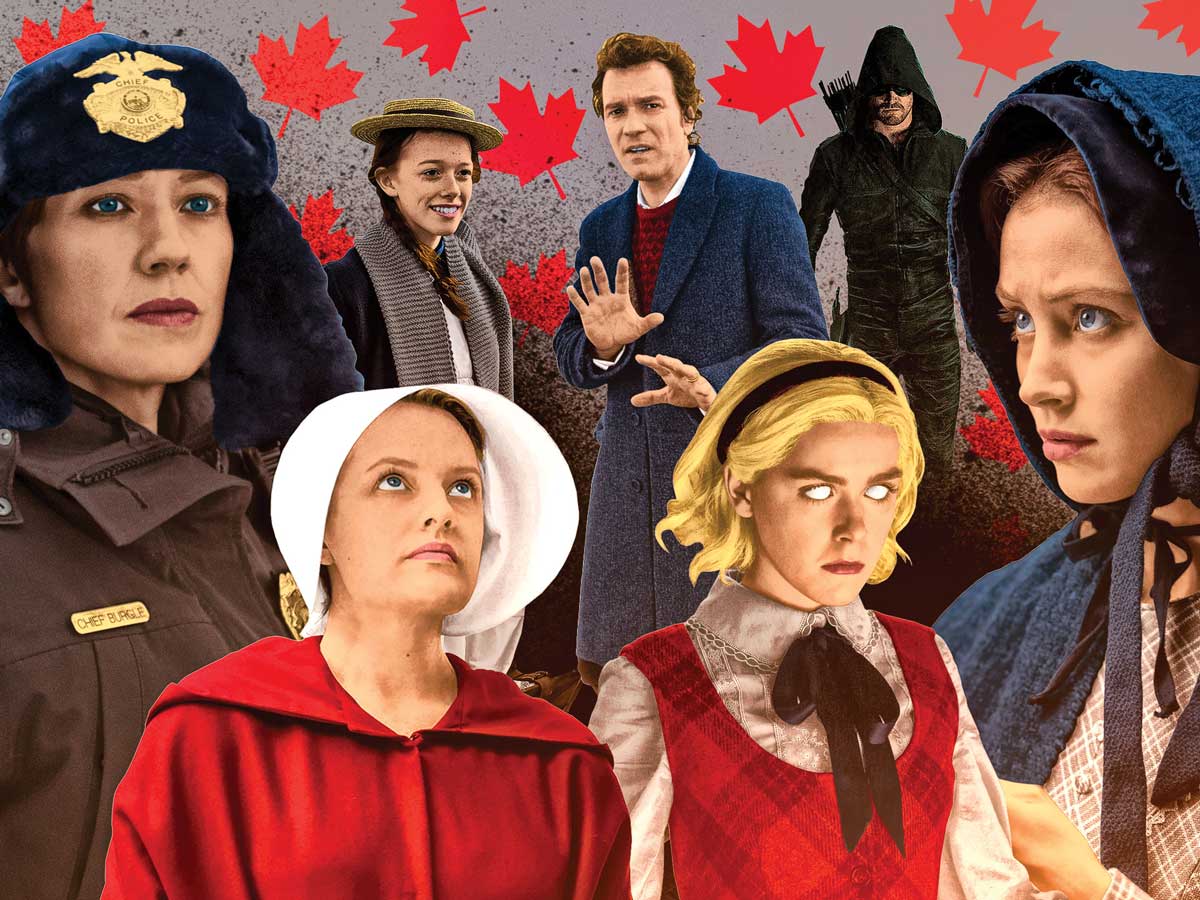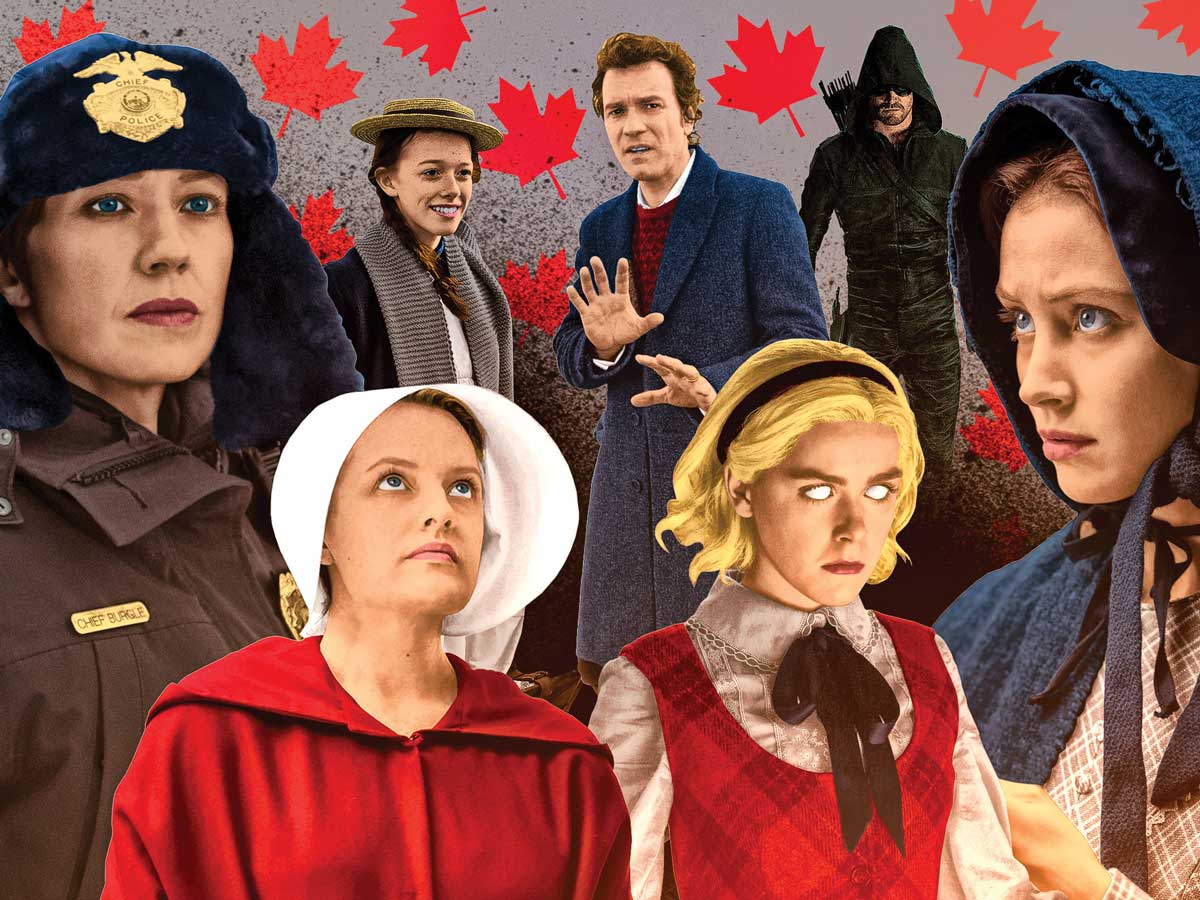
Why Canada is the real winner of the streaming wars
 Canada has long been an attractive place for U.S. film and TV shoots, the result of federal and provincial tax incentives, a low dollar and the ease of doing business in a politically stable country (Illustration by Gluekit)
Canada has long been an attractive place for U.S. film and TV shoots, the result of federal and provincial tax incentives, a low dollar and the ease of doing business in a politically stable country (Illustration by Gluekit)
In 2015, John Landgraf, the CEO of cable channel FX, declared that we had reached a state of peak TV. “There is simply too much television,” he said, noting that more than 400 original scripted series were slated to air in the U.S. that year. Subsequently, he predicted, that figure would inevitably decline.
Several years later, the balloon hasn’t popped; it’s expanded. A record 495 original scripted series aired stateside in 2018. For the first time, streaming services such as Netflix and Amazon accounted for the biggest slice of the pie. And the Canadian film and television industry is grabbing a fork.
Canada’s screen-based entertainment business is booming, taking in a record $8.92 billion in production volume in the 2017/2018 season—an increase of more than 40 per cent over the past decade. For this we can largely thank the Netflix-fuelled rise in streaming TV, otherwise known as “over-the-top” content—film and TV that’s made specifically for online providers, bypassing a traditional cable or broadcast subscription. The internet is a ravenous beast: since 2014, the number of original over-the-top scripted series has increased by 385 per cent, from 33 to 160.
All that content has to be made somewhere. Canada has long been an attractive place for U.S. film and TV shoots, the result of federal and provincial tax incentives, a low dollar and the ease of doing business in a politically stable country. Bottom line: it’s often cheaper to shoot north of the border. But the sheer volume of content being produced for streaming services has upped the ante. “Broadcasters program for 24 hours a day, seven days a week,” says Marguerite Pigott, Toronto’s film commissioner. “Over-the-top services have unlimited shelf space, and that simple fact makes it a game-changer.”
“Our industry is hungry for production accountants,” says Toronto’s film commissioner
The effects of the streaming boom are reverberating across the country. Last year, CBS, which launched its streaming service, CBS All Access, in 2014, rented out 260,000 square feet of dedicated studio space in a former Kraft warehouse in Mississauga, Ont.—the largest such space secured by an American broadcaster in Canada. Just north of Toronto, construction is under way on a $100-million, 500,000-square-foot studio founded by two veteran Canadian media executives, Frank Sicoli and Dominic Sciullo. The Ottawa Film Office has teamed up with Toronto-based TriBro Studios to convert a former government research facility in Ottawa’s greenbelt to a massive production complex. In B.C., where Vancouver has long been considered Hollywood North, the industry grew by 40 per cent between the fiscal years 2015/16 and 2016/17. In 2018, according to the Canadian Media Producers Association, the film and TV sector employed 179,000 people (for comparison, there are about 217,000 people with the Canadian CPA designation).
Jennifer Twiner McCarron, CEO of Vancouver-based Thunderbird Entertainment, estimates that 80 per cent of the content that her company’s animation wing, Atomic Cartoons, produces is for streaming platforms. “When you only had traditional broadcast to sell to, you were competing with every other company for coveted Saturday morning spots,” she says. Now, the floodgates have opened. “You can sell to all of the streamers, and it can be on any device, at any time, and it’s instantly in multiple countries in different languages.” Last year, Thunderbird opened a new studio in Ottawa and has already doubled its original staff.
Streaming has not only altered the economy in Canada, says Pete Mitchell, the president and COO of Vancouver Film Studios. “Entertainment is becoming a pillar of the global economy,” he says, thanks to streaming video’s ability to tap into an international market. “It’s almost impossible now to find facilities, equipment and people in Vancouver and in other production centres around the world.”
The growing demand for labour has the industry scrambling to recruit talent, sometimes from unlikely places. In Vancouver, the union that represents technicians and artists has seen an influx of workers from Alberta’s struggling oilpatch industry. Film shoots don’t just employ actors and directors and camera operators; they also require plumbers, electricians, carpenters, painters—and accountants. “Our industry is hungry for production accountants,” says Pigott. “Because tax credits have a lot to do with why a production company or studio chooses a jurisdiction, there’s a benefit to having accountants who are deeply familiar with the local tax credit regime.”
Most of the recent uptick in Canada’s production volume is due to foreign investment—the industry took in a record-breaking $5.6 billion in foreign investment production this past fiscal year, a year-over-year increase of 18.7 per cent. Twiner McCarron says the appetite for content has allowed her company to sell its own intellectual property rather than just service American clients. And increasingly, producers north of the border have partnered with American counterparts to deliver Canadian stories to a global audience, like the Netflix/CBC co-productions Anne with an E and Alias Grace.
The future of streaming entertainment all but guarantees continued industry growth in Canada. Netflix is still the dominant player, but more and more media companies are jumping into the ring. Fear of Netflix was a major factor behind the AT&T and Time Warner merger, and drove Disney and Comcast to bid aggressively for 21st Century Fox. Disney, of course, won the merger, and will roll out its streaming service, Disney+, in the U.S. in November. WarnerMedia is floating plans to do the same. In Canada, Bell’s streaming service, Crave, has seen impressive growth, with 2.7 million subscribers as of August 2019.
“There’s more television now, there are higher budgets, and there are more big companies with deep pockets coming into the marketplace,” Mitchell says. “It’s a really good time to be in the film and television industry.”
AND . . . ACTION! |
|---|
|
Here’s what’s filming in Canada this fall VANCOUVER Chilling Adventures of Sabrina Season 2 Netflix Riverdale Season 4 CW The Good Doctor Season 3 ABC Supergirl Season 5 CW MONTREAL The Bold Type Season 4 Freeform TORONTO Star Trek: Discovery Season 3 CBS All Access American Gods Season 3 Starz |